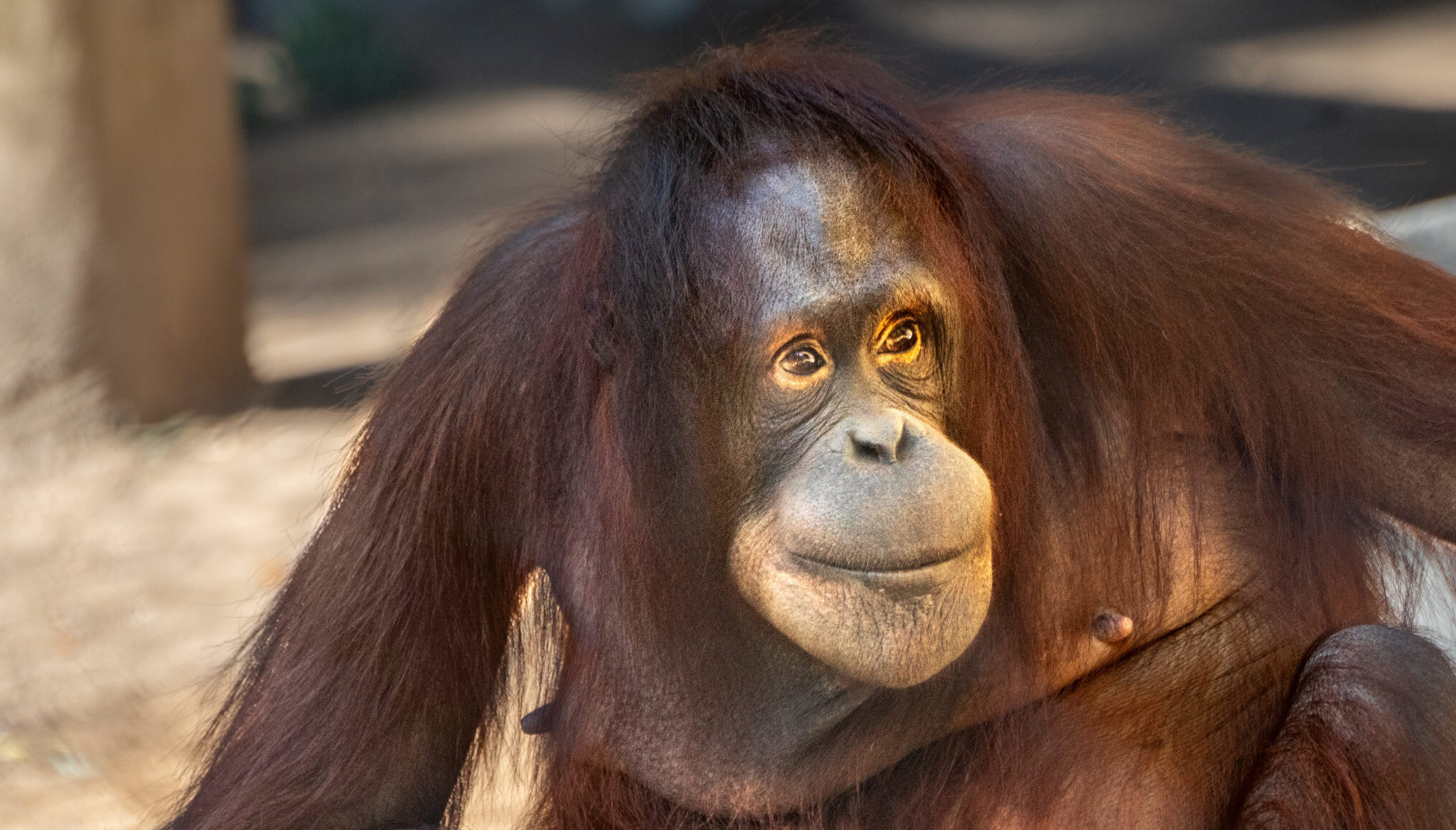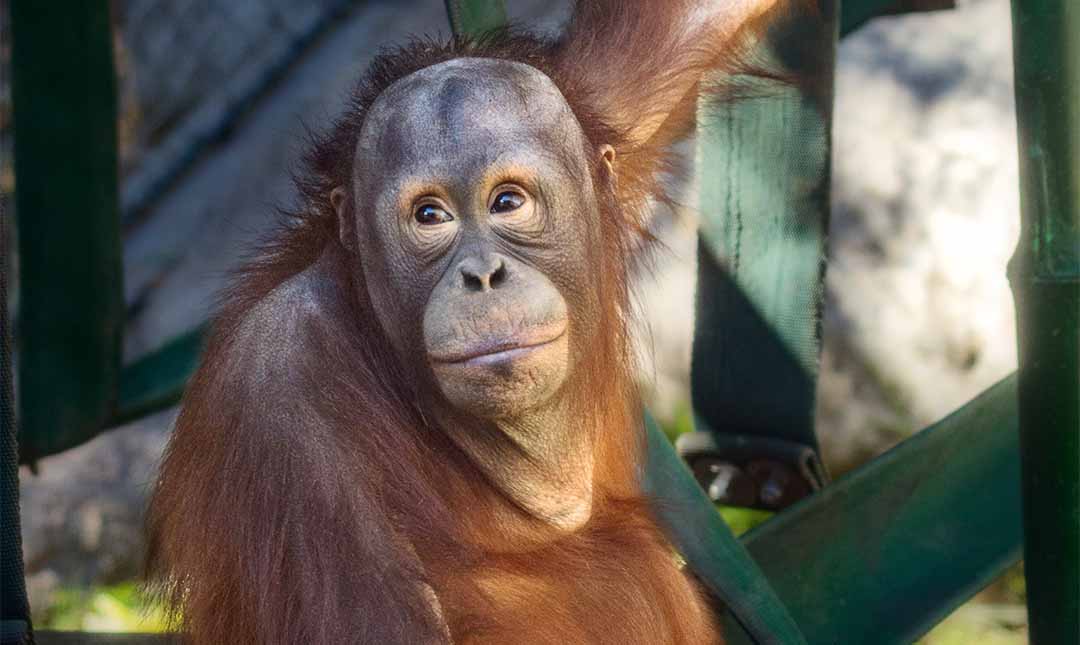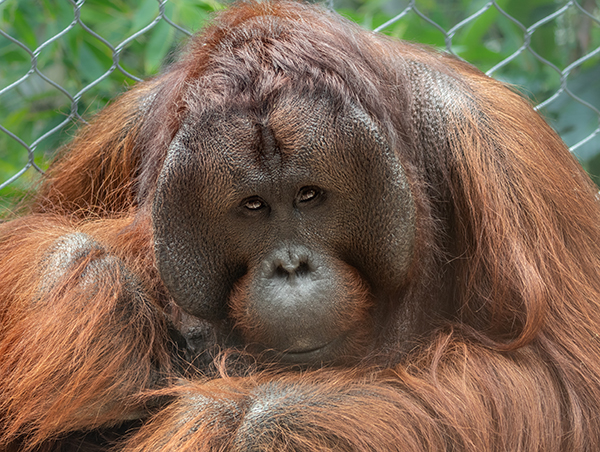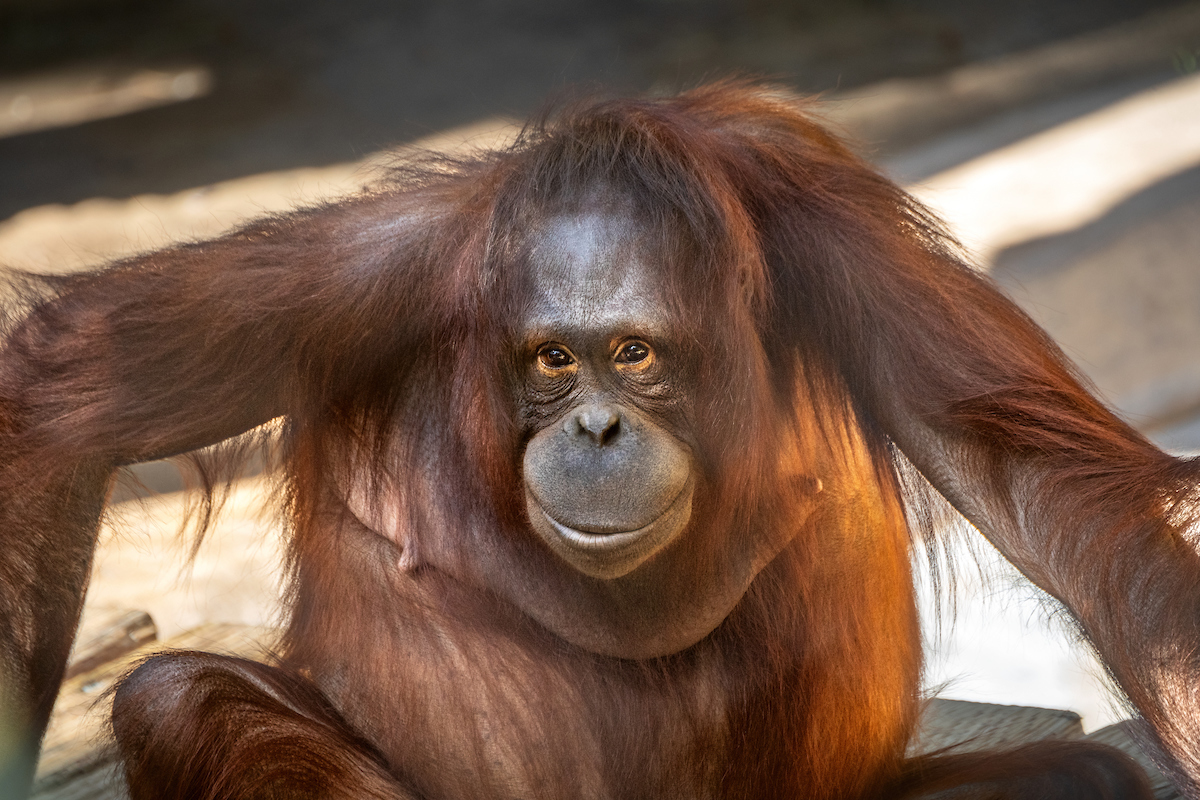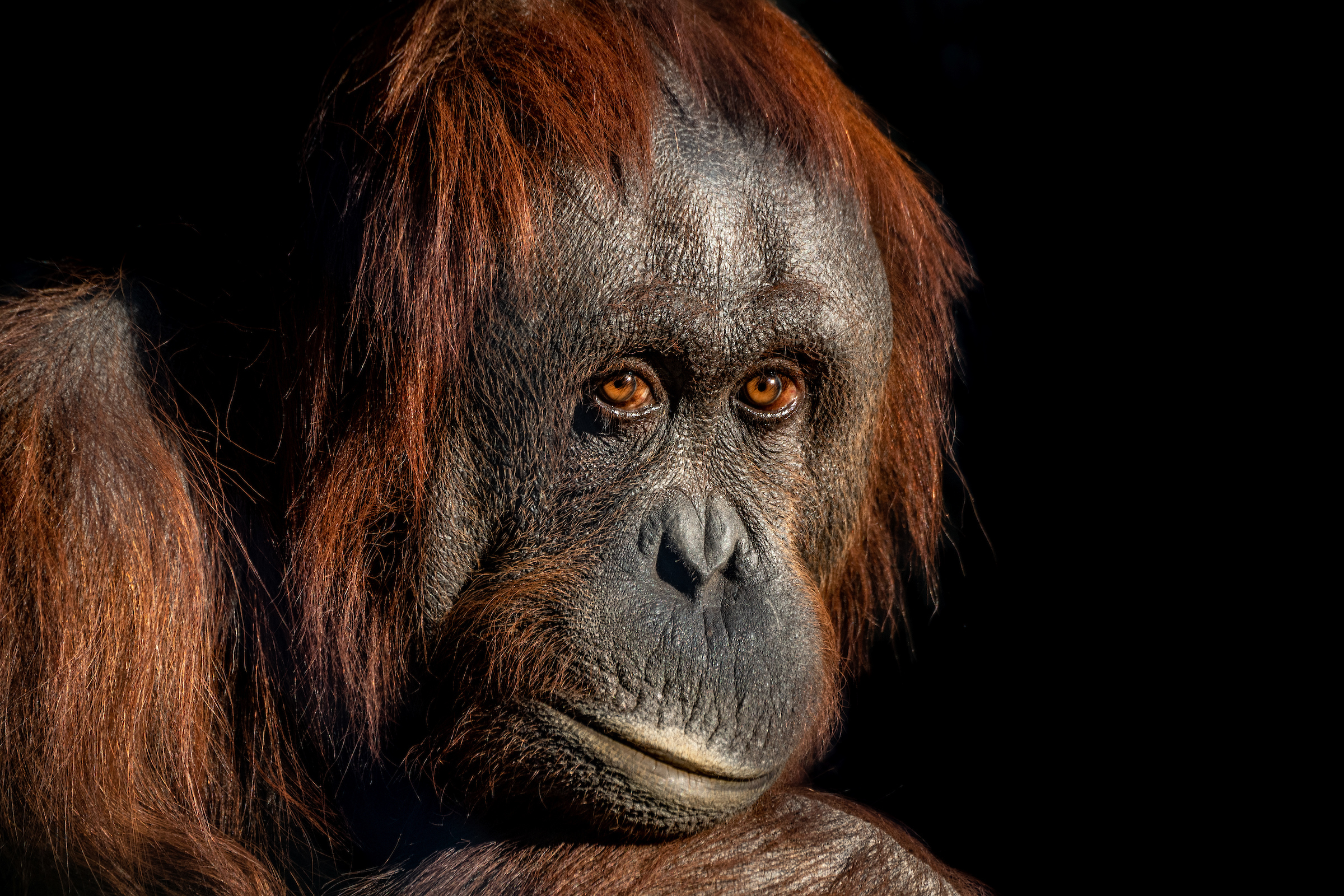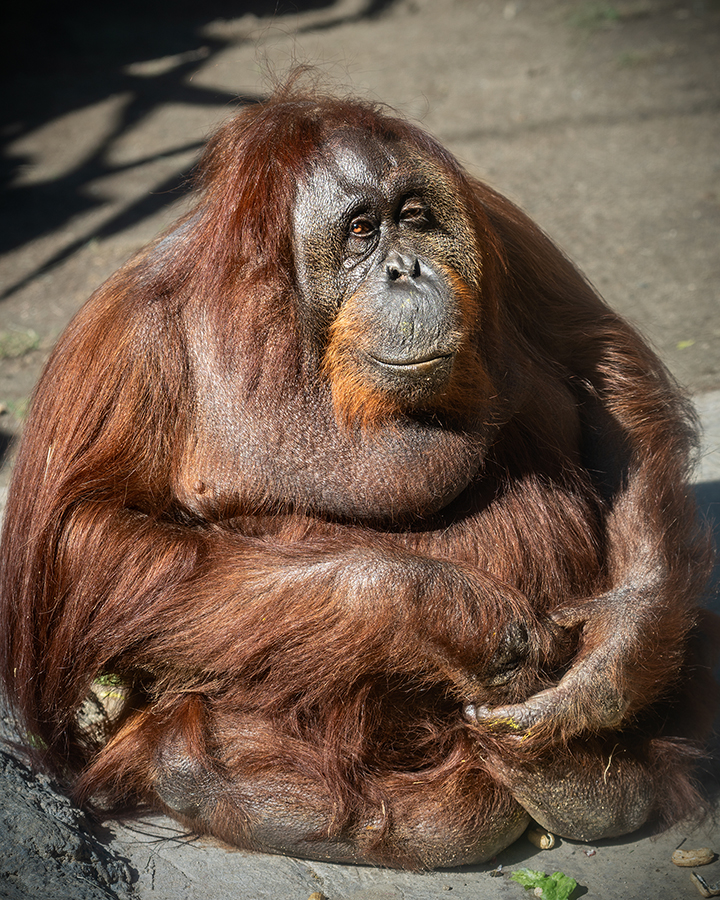About
There are three species of orangutan, and the L.A. Zoo houses Bornean orangutans. The world’s largest arboreal mammals, these apes spend about 90 percent of their time in trees. They use long hands and grasping feet to grip branches and pull themselves through the canopy. Translated from Malay, their name means “person of the forest,” and they share 97 percent of their DNA with humans. Orangutans have a well-documented history of tool use. In the wild, branches are used as poles, hammers, and rakes to poke termite holes, test the depth of water, or reach their favorite fruit. Leaves are used as umbrellas, sunshades, sponges, and napkins. Orangutans have been known to engage in deceptive behavior to outwit their partners. They are able to identify more than 72 symbols for common objects, numbers, and commands demonstrating a strong grasp of vocabulary and long-term memory.
Of all non-human primates, orangutans have the longest interbirth interval. A single infant is born and cared for by its mother for 7 to 8 years before another infant is born. Mothers have much to teach their young to survive. Lessons include what food to eat, tool use, orangutan etiquette, and how to avoid predators. Adult males are the most solitary of the apes and defend their territories from other males. Males are about twice the size of females with an arm span of over seven feet. Males have cheek pads and large throat sacs under their chins to amplify their calls. These calls attract females and warn rival males to stay away. Subordinate males in the same area will not develop cheek pads until they establish their own territories.
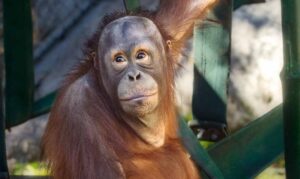
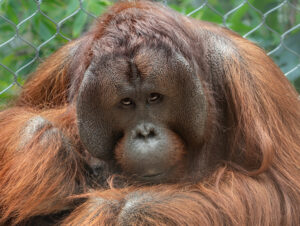
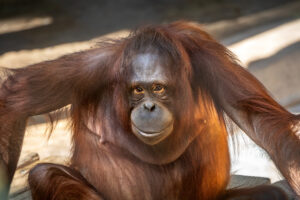
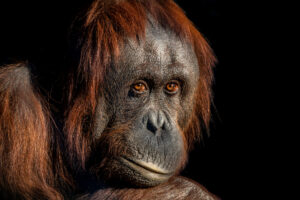
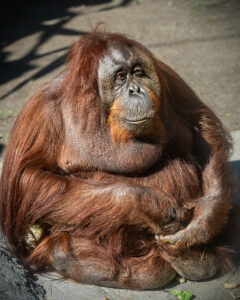
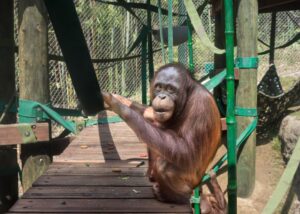
Status
Over the past 50 years, orangutan populations have declined more than 50 percent. The single greatest threat to these apes is habitat loss due to human encroachment on their rainforest homes.
Habitat
Bornean orangutans are found only on the island of Borneo, part of a group of Indonesian islands. They live in rainforests with large trees.
Diet
About 60 percent of the orangutan diet consists of fruit, with durian a favorite. They also eat flowers, young leaves, bark, eggs, and termites. Excreted seeds help spread fruit bearing trees to other parts of the forest.
Physical Characteristics
Males are up to 4.5 feet tall and weigh 200 pounds or more. Females are about 50 percent smaller. Lifespan in the wild is estimated at 35 years. In human care, orangutans can live up to 70 years.
LOCATION WITHIN THE ZOO
You’ll find this animal in the Red Ape Rain Forest. See Zoo Map.

